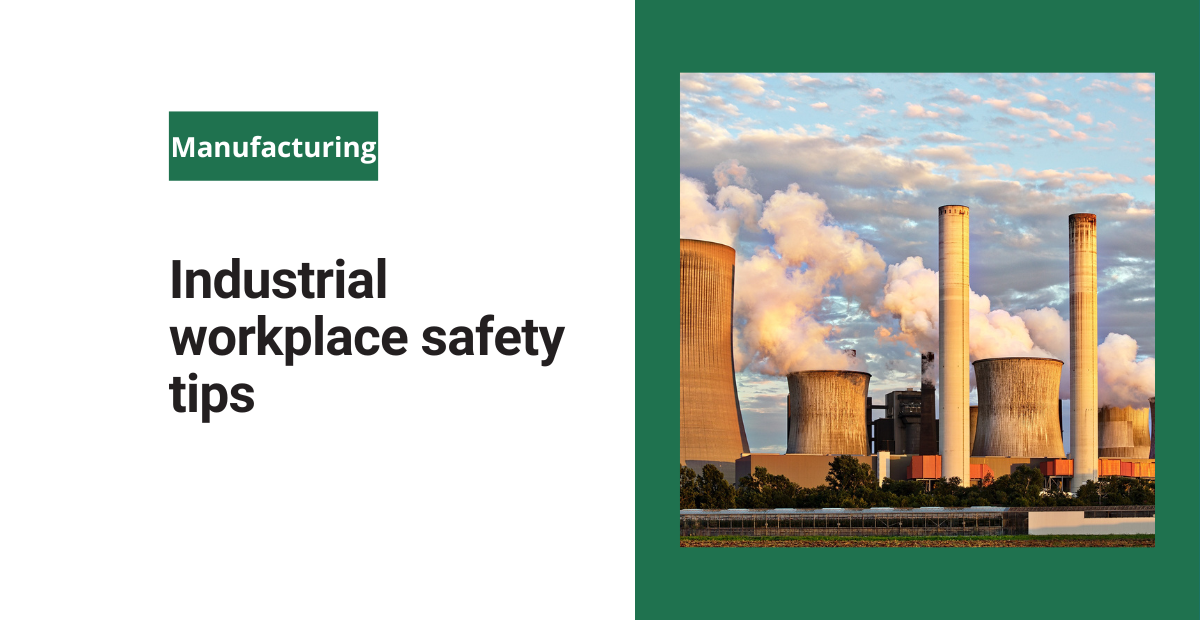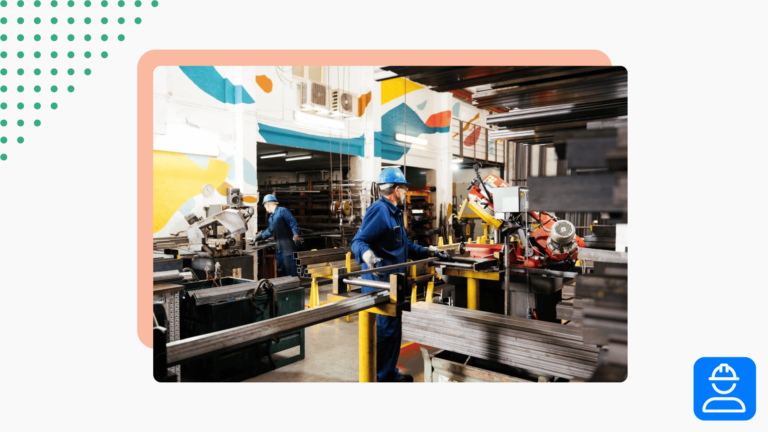According to the 2020 Liberty Mutual Workplace Safety Index, disabling workplace injuries cost U.S. businesses more than $59 billion every year and the top 10 causes of workplace injuries cost U.S. businesses over $1 billion per week. On top of these costs, it’s essential to maintain a happy and healthy workforce to maximize production levels and attract and retain the best workers.
Here are some important industrial workplace safety tips that can help your organization exceed regulatory compliance, maximize production, and see continual improvements.
Employee training
Safety and health training is key to keeping workers safe and sending them home as healthy and happy as when they arrived at the workplace.
Safety training is an integral part of your worker’s onboarding process, but it also requires regular refresher training, not only for compliance but also for effectiveness.
This is important because worker alertness goes down over time and they may become complacent.
There are plenty of ways to give your workers the training they need to understand the appropriate safety rules and procedures, including:
- Formal training days where the team learns new safety procedures and safe work practices for specific job tasks.
- Formal new employee orientations to help workers become familiar with the new work environment and the company’s policies and procedures.
- Refresher training, as mentioned earlier, because workers could become complacent with safety procedures that could lead to mistakes or errors, for this reason, it is important to refresh workers knowledge and skills.
- Daily remind workers of the safety-related processes they will perform that day.
You can provide worker training however you see fit, as long as it’s effective. Your workers need to know how and why to perform job tasks safely.
Worker engagement
If you want to increase productivity and competitiveness, you need to improve how you and the company engage with workers. Employee engagement is the level of enthusiasm, loyalty, and connection a worker has for his or her job and company.
A worker who feels part of the team and appreciated will take ownership of his or her safety and become a hard-working team player. When workers feel valued the organization as a whole benefit.
Safety-focused culture
A safety-focused culture in your workplace means that your workers never feel as if safe work practices and procedures are an obstacle to getting their job tasks done correctly and on time.
This requires a visible commitment by leadership at all levels of the company. Everyone from management on down need to buy-in on what needs to be done to keep everyone safe. This can be accomplished by:
- Communicating company values.
- Demonstrating leadership.
- Involving workers—encourage them to speak up. Knowing that one’s opinions are not only listened to but also contributes to the safety values of the organization.
- Investigating safety incidents thoroughly.
- Showing appreciation for safe work well done.
Wearing safety gear
Personal protective equipment, or PPE, protects your worker against any physical harm or hazards in the workplace environment. It’s important to know that safety gear provided on the job is most effective when it meets the correct size, fit, and height of its user.
Common PPE you will find at an industrial workplace includes safety gloves, steel-toed boots, safety glasses, hard hats, and much more.
The dangers of not wearing safety gear can cause injury to:
- Hearing from exposure to loud occupational noise.
- Lungs from breathing contaminated air.
- Head and feet from falling objects.
- Hands from sharp objects.
- Eyes from debris in the air or splashes of hazardous chemicals.
Proper use of equipment and tools
The most prevalent source of workplace injuries is the misuse of tools and equipment. When handling equipment, workers have to ensure that they use each equipment piece as intended and the correct way. For example:
- Using the right tool for the job.
- Ensuring machine guards are properly installed.
- Ensuring that the tools are in working order before beginning a task.
- Always wearing safety gear, including safety glasses, when working with tools and equipment.
Anyone using equipment in the workplace needs to be thoroughly trained in its operation and kept up to date.
Report safety hazards
Workers should be trained and encouraged to be alert and report any safety hazards they see while at work. All hazards that are found in the workplace should be reported immediately to a supervisor or designated worker.
Hazards reporting training is specific to each workplace and should include:
- What is an unsafe condition?
- What is unsafe behavior?
- How should a hazard be reported?
- When should a hazard be reported?
- To whom should you report?
- Where to locate hazard reporting procedures?
The workers need to understand that reporting hazards are encouraged across the organization.
Communicating with workers
When you have open communication, you provide your workers with the opportunity to make the workplace safe. Through daily and monthly safety talks or meetings, you can influence and prepare everyone on safety matters. Allow workers to provide input and be sure to give recognition to safe jobs well done.
Effective communication is essential because:
- It avoids confusion
- It provides purpose
- It builds a good safety culture
- It creates responsibility among the team
A safe work environment is a productive workplace. Health and safety are not simply a regulatory requirement: it is a business opportunity.
You can boost your bottom line by improving health and safety performance, which reduces the costs associated with avoidable injuries and illnesses and lost workdays and leads to higher productivity.
Other posts you might like…
No posts

